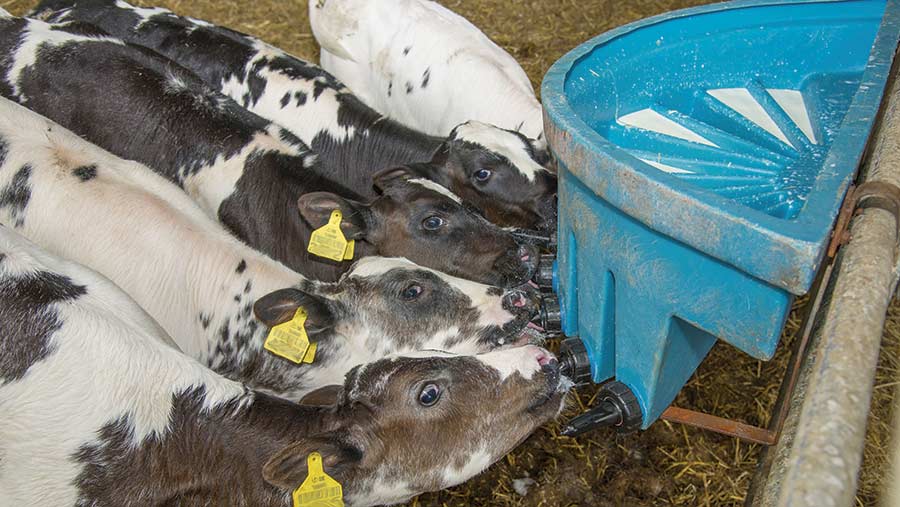Beef crisis hitting dairies with lower calf values
 © FLPA/John Eveson/Shutterstock
© FLPA/John Eveson/Shutterstock Rearing calf prices have fallen away sharply since the summer across England and Wales and are currently 24% back on the year.
According to Livestock Auctioneers Association and AHDB market data for calves aged three weeks old, continental-cross calves are £30-£40 cheaper on the year.
This news comes as the prime beef market enters its fifth month of low prices, with average deadweight steer contracts at 322p/kg at the start of November.
See also: Suckled calf trade struggling amid beef crisis
England and Wales rearing calf prices (at three weeks) |
|||
|
|
Friesian-Holstein bull/heifer |
Hereford-cross bull/heifer |
Continental-cross bull/heifer |
|
Average prices October-November 2018 |
£29.91/£46.55 |
£118.74/£70.53 |
£184.82/£129.04 |
|
Average prices October-November 2019 |
£23/£29.97 |
£86.89/£56.20 |
£146.52/£99.84 |
|
Change on the year |
-£6.91 (-23%) |
-£31.85 -26% |
-£38.3 (-20.7%) |
Bentham
Bentham’s autumn calf trade has reflected national trends, with prices falling short of last year’s levels.
Numbers have remained very high at the Wednesday sales, with recent entries passing the 100-head mark.
The past three sales have seen British blue-cross calves average £261, £286 and £289, while Angus bulls have averaged £220, £285 and £290.
Limousin bulls have averaged £253 over the past three weeks and the best continental calves are topping at around £375, compared with £400+ in the summer.
“It’s been such a prolonged period of low beef price that everything has been affected to a degree – stores, stirks and calves,” auctioneer Will Alexander told Farmers Weekly.
“It takes a serious calf to make £400 at the moment.”
The best blue-cross animals are making £350 and more, the stronger calves are at £280-£340, while the average types are at £220-£260.
Markethill, Armagh
Calf trade in Northern Ireland has not been as affected by the low beef prices, according to auctioneer Hampton Hewitt of Markethill Livestock Sales.
He said a combination of more buyers in the market for calves, improving quality and the first wave of farm subsidy payments had lifted prices in the past three weeks.
Weekly entries are typically at 130-170 head. Blue-and Angus-cross bull calves managed to hit both £345 and £330 this week (12 November).
The Department of Agriculture and Rural Affair’s Advance Direct Payments were scheduled from 21 October.
“Our calf trade has stayed steady here,” he said. “Quality has helped and there are two or three producers who are now buying calves who used to buy store cattle.”
